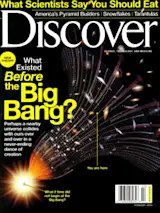MUSEUMS
Search the Night Sky
How do you find a comet like Maria? A Quaker education helps
By Tim Folger
1 Vestal Street, Nantucket, Massachusetts
Down a quiet lane leading off Nantucket’s cobblestoned Main Street stands a two-story house covered with unpainted shingles weathered gray by rain and fog. Built in 1790, its clean lines and lack of ornamentation mark it as a Quaker home. Beyond the threshold is a world shaped by a culture that prized integrity, humility, and equality—Quaker values that nurtured Maria Mitchell, America’s first female professional astronomer.
The furnishings are simple and spare, with one gleaming exception: Maria’s precious brass telescope. On the night of October 1, 1847, Maria (pronounced Ma-RYE-uh), then 29, excused herself from a family party and climbed, lantern in hand, to the roof. Her nocturnal ascent surprised no one. Maria was a highly skilled amateur astronomer, tutored from ...














